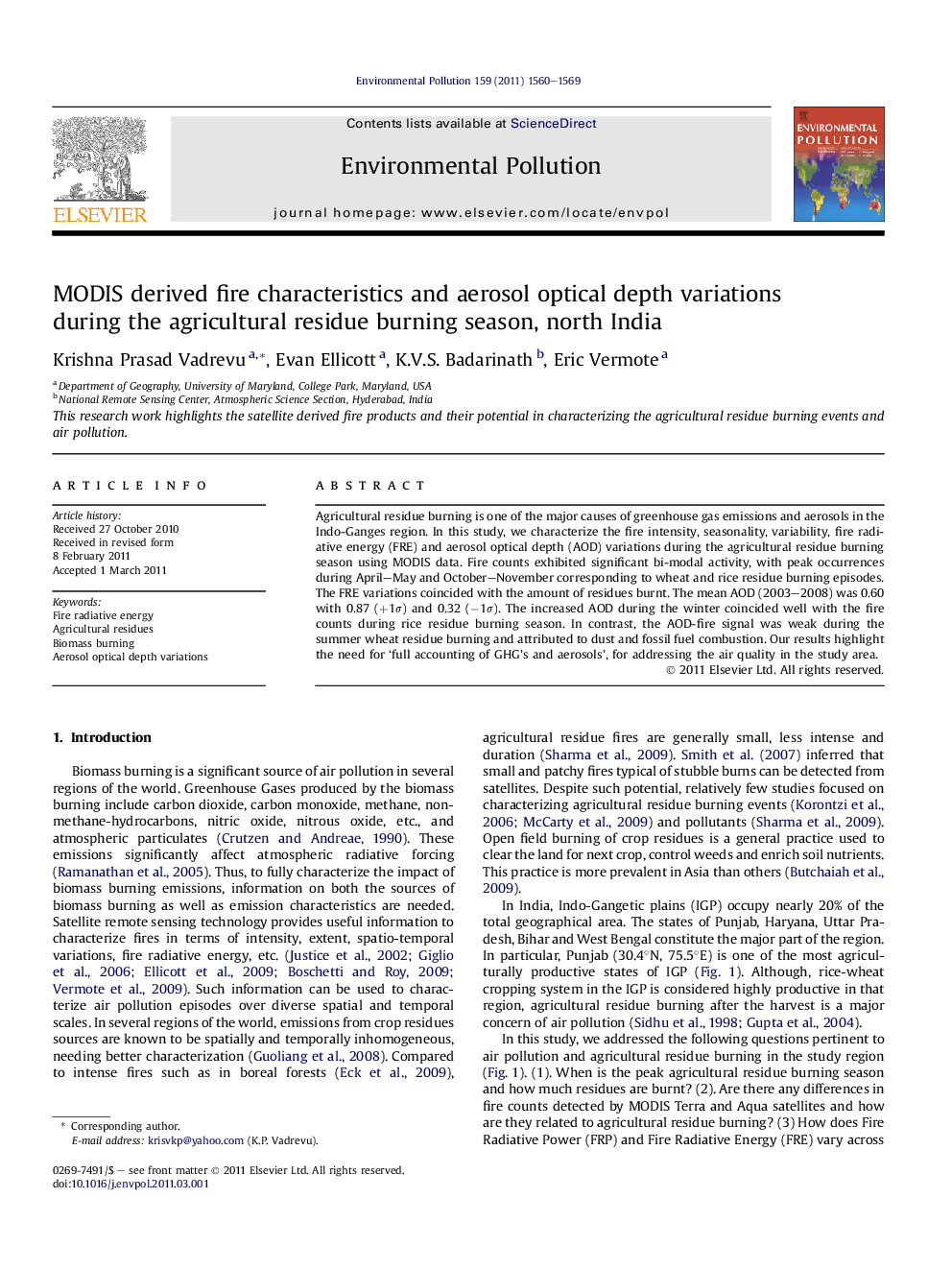| Article ID | Journal | Published Year | Pages | File Type |
|---|---|---|---|---|
| 4425503 | Environmental Pollution | 2011 | 10 Pages |
Agricultural residue burning is one of the major causes of greenhouse gas emissions and aerosols in the Indo-Ganges region. In this study, we characterize the fire intensity, seasonality, variability, fire radiative energy (FRE) and aerosol optical depth (AOD) variations during the agricultural residue burning season using MODIS data. Fire counts exhibited significant bi-modal activity, with peak occurrences during April–May and October–November corresponding to wheat and rice residue burning episodes. The FRE variations coincided with the amount of residues burnt. The mean AOD (2003–2008) was 0.60 with 0.87 (+1σ) and 0.32 (−1σ). The increased AOD during the winter coincided well with the fire counts during rice residue burning season. In contrast, the AOD-fire signal was weak during the summer wheat residue burning and attributed to dust and fossil fuel combustion. Our results highlight the need for ‘full accounting of GHG’s and aerosols’, for addressing the air quality in the study area.
► MODIS data could capture rice and wheat residue burning events. ► The total FRP was high during the rice burning season than the wheat. ► MODIS AOD variations coincided well with rice burning events than wheat. ► AOD values exceeding one suggested intense air pollution.
